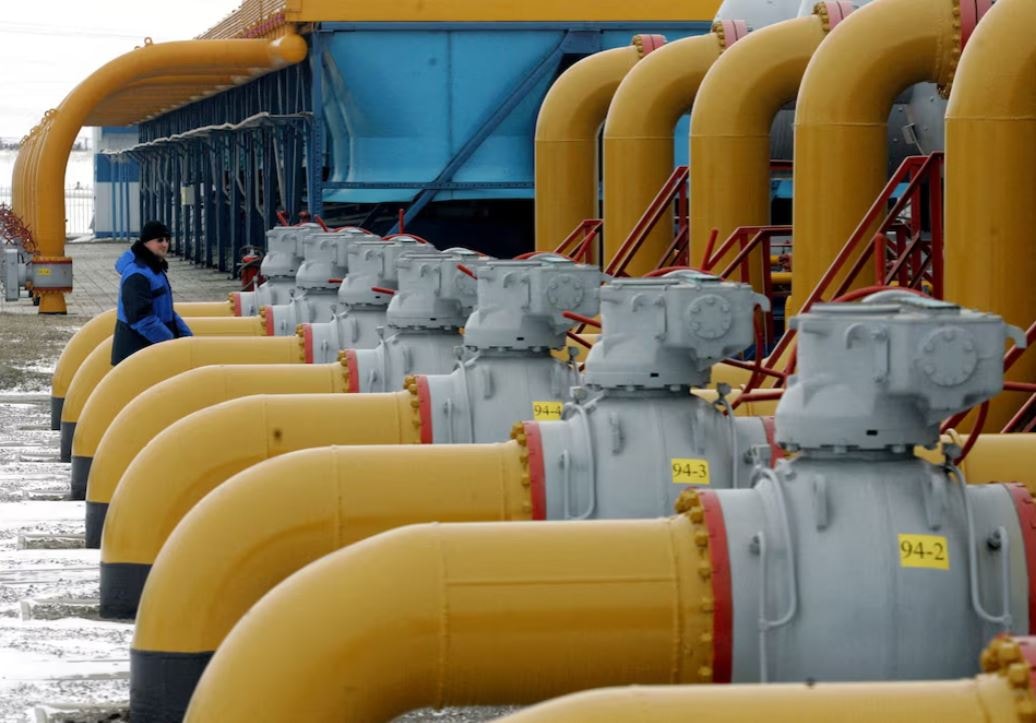What happens when Russian gas supplies to Europe via Ukraine end?
Russian gas supplies to Europe transiting Ukraine for more than 40 years ended on January 1, after Ukraine's Naftogaz refused to extend the transit agreement contract with Russia's Gazprom for the next five years.

Despite the ongoing Russia-Ukraine conflict, Ukrainian President Volodymyr Zelensky said on December 19, 2024, that Kiev could consider transiting Russian gas until the fighting ended. A week later, Russian President Vladimir Putin announced that there was no time left for extending the contract.
How big is the mass?
Russian gas supplies to Europe have plummeted after the conflict broke out in Ukraine in February 2022, prompting the European Union to “decouple” from its dependence on Russian gas.
For more than half a century, Moscow had a 35% share of Europe's gas market. However, this share fell to around 8% during the conflict.
As of 1 December 2024, the EU received less than 14 billion cubic metres (bcm) of gas from Russia via Ukraine, down from 65 bcm/year when the five-year contract came into effect in 2020.
The European Commission said this volume could be completely replaced with liquefied natural gas and imported via non-Russian pipelines.
Moscow has lost market share to rivals such as Norway, the US and Qatar.
Russia could earn about $5 billion from gas sales through Ukraine this year based on the Russian government's average gas price forecast of $339 per 1,000 cubic meters of gas, according to Reuters calculations.
EU gas prices rose to record highs in 2022 after losing cheap supplies from Russia. Now, EU officials and traders say the likelihood of a repeat of that price increase is slim, given the small number of remaining customers.
Which countries are affected?
The Russian gas pipeline transiting through Ukraine supplies fuel to Austria and Slovakia.
Austria gets most of its gas via Ukraine, while Slovakia imports about 3 bcm from Gazprom each year, meeting about two-thirds of its needs.
Gazprom stopped supplying Austria's OMV in mid-November 2024 due to a contract dispute, but volumes remained stable via this route as other companies stepped in to buy gas.
Slovakia said the loss of Russian supplies would not affect its consumption and that it had diversified its supply contracts. Its main gas buyer is SPP, which has other non-Russian supply contracts with BP, Eni, ExxonMobil, RWE and Shell.
.jpg)
What alternatives do buyers have??
Most other Russian gas routes to Europe are closed, including Yamal-Europe through Belarus and Nord Stream under the Baltic Sea.
One option is the TurkStream pipeline under the Black Sea, Bulgaria, Serbia or Hungary. However, capacity is limited.
According to Austria's energy regulator E-Control, Slovakia's gas supplies could come from Hungary, about a third from Austria and the rest from the Czech Republic and Poland.
Austria's regulator said the country would not face disruptions as it was prepared to switch supplies.
The Czech Republic is likely to tap more supplies from German pipelines thanks to its exemption from German domestic gas taxes, since January 1.
The Czech Republic said it was ready to provide Slovakia with gas transportation and storage capacity.
Russia supplies Moldova with about 2 bcm of gas a year. It is piped through Ukraine to the breakaway region of Transnistria, where it is used to generate cheap electricity that is sold to government-controlled regions of Moldova.
Gazprom said it plans to stop supplies from January 1 due to unpaid bills.
Moldovan Prime Minister Dorin Recean condemned the decision but said the country had diversified its supply sources. The country plans to take measures to reduce consumption by at least a third from January 1.
For Ukraine, its security of supplies will not be affected because it does not use Russian gas transit, the European Commission said.
Where does this gas come from?
The Soviet-era Urengoy–Pomary–Uzhgorod pipeline transports gas from Siberia through the town of Sudzha, in Russia's Kursk region.
The pipeline runs through Ukraine to Slovakia, where it branches off to the Czech Republic and Austria.
Transnistria borders Ukraine and also receives Russian gas via Ukraine.
